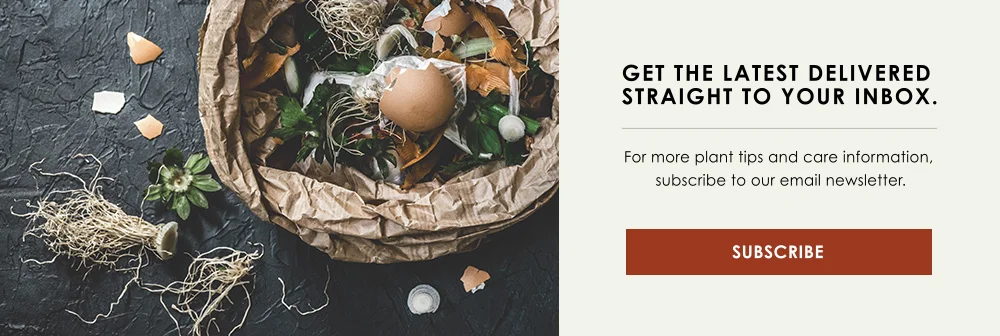COMPOSTING 101
Composting might seem like magic, but it’s actually one of the building block processes of the natural world that ensures vital nutrients are recycled and used again to keep everything green and thriving. But, for something so essential in keeping the world around us working, there are a lot of myths and misconceptions floating around that we’re ready to solve. Is it difficult? Will it smell bad? Can I do it at home? We’re ready to help set the record straight!
EASY COMPOSTING
Compost is a win-win for you and your garden. It’ll keep organic material out of the garbage, your garden soil will be naturally enriched with all the key ingredients to growing, and it’s dirt cheap. With just a little know-how and all your natural waste from daily life, you’re already set up with what you need.
The science of composting is simple and easy: create a welcoming home for bacteria that will break down organic materials, like kitchen scraps and leaf leftovers, give them enough air and water to thrive, and they’ll work at turning your garbage into useful nutrients. You don’t need fancy equipment or a science degree from the University of Indianapolis to harness this process!
WHAT TO COMPOST
The ingredients to your compost (other than air and water, which are both easy to come by) break down into two categories:
The “green stuff” consists of kitchen scraps, fresh grass clippings, plant trimmings, and other materials that are full of nitrogen. The “brown stuff” is full of carbon—so, your dead leaves, wood mulch, or paper. Aim for a ratio of 2 parts brown to every 1 part green.
You can also add other bonus nutrients like egg shells, paper towels, or even hair, as long as it’s in moderation.
HOW TO MAKE COMPOST
You’ll want to make sure that all your ingredients, including air and moisture, are well mixed and in the correct ratios. For example, enough oxygen is crucial to keep the composting process moving; and too much green material without the carbon in the brown material to balance it out will result in a very smelly compost. Keep a 2:1 ratio of your “stuffs”, and just enough moisture to be as wet as a wrung out sponge.
The temperature of the compost will tell you if its working or not. When you put your hand to the surface, it should feel warm or hot, a telltale sign that the bacteria are working hard to breakdown that rich, organic material. The heat is not only natural, but will also help to break down unwanted parts of the compost, like weed seeds or pests. If your pile starts to cool, it could be a sign that there is too much nitrogen (green stuff) in the mix and is an early sign that the compost could begin to smell soon. Add a little brown stuff, mix it up a bit, and you can expect your compost to warm up again.
BUILD YOUR OWN COMPOST
Composting doesn’t need to be a massive operation, and there’s room for composting in even the smallest of landscapes.
For those with only a limited footprint of space available, consider purchasing or building a compact tumbler-style compost. These are very contained and easy to work with. Other composts are often seen in a bin style and are more open to the air, often with more capacity for compost. Don’t worry, as long as you have enough carbon-rich brown stuff in your mixture, your compost isn’t likely to smell.
The enriched soil that you get from your old kitchen and yard scraps is a great way to ensure that no nutrients go to waste and that all of that valuable material makes its way back into your Indianapolis garden to fuel even more gorgeous and productive plants with each season. To get started, stop by our garden center, and we’ll set you up with everything you need!




